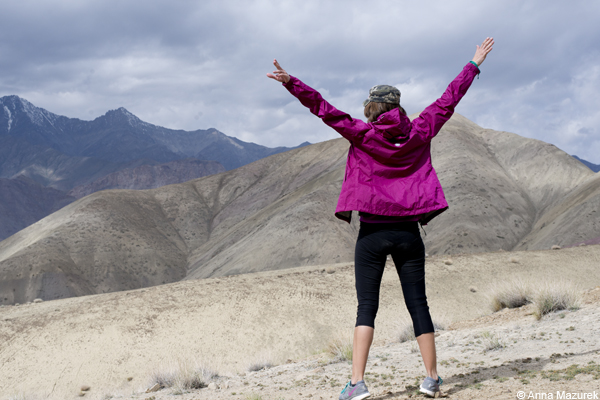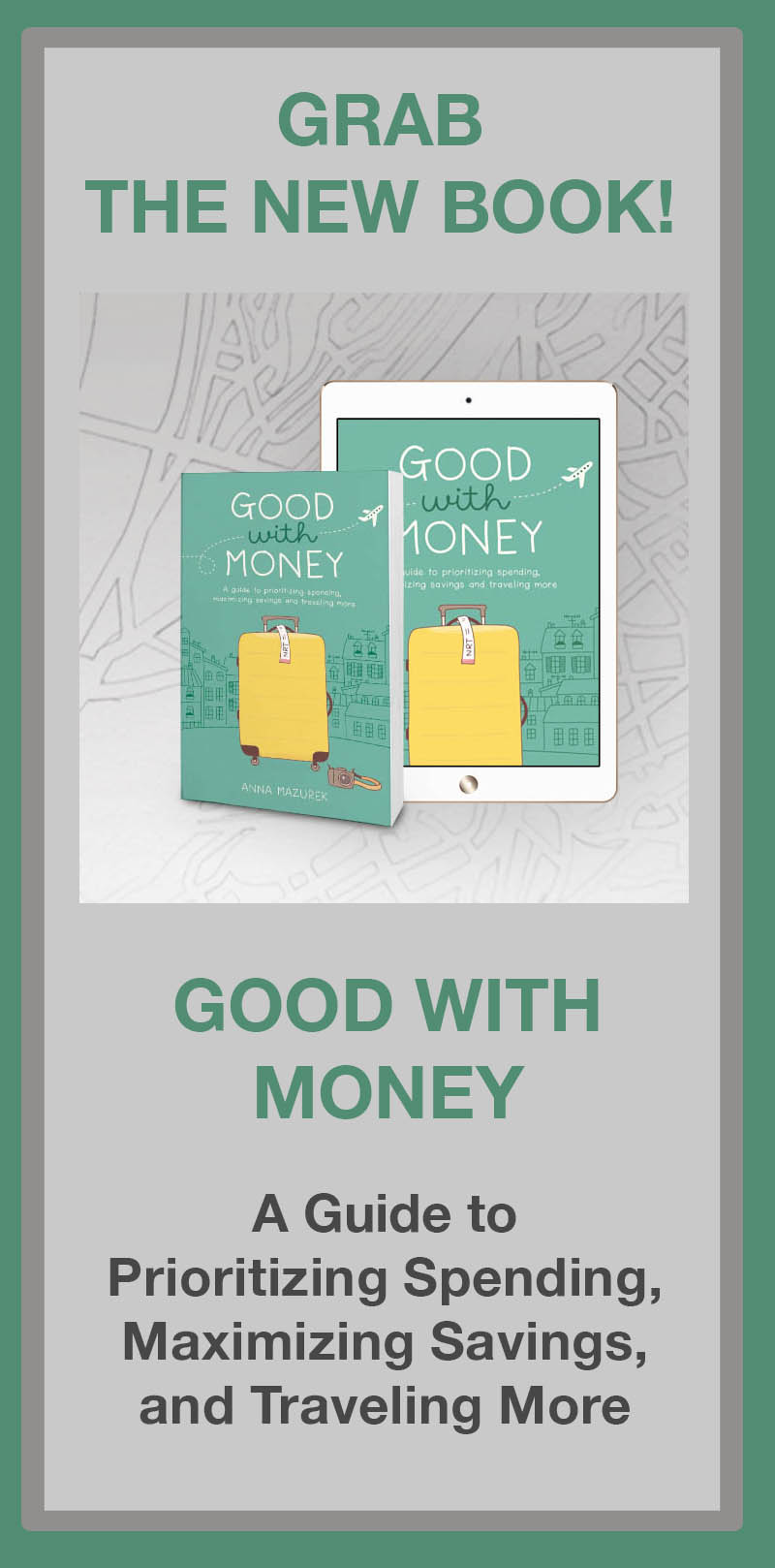 To recover from trekking in Patagonia, I spent a week in El Bolson, a small village south of Bariloche, Argentina where I met Marita Jansons and Matt Butt. The Australia couple was just starting a year-long round-the-world trip! We became instant friends and ended up traveling in Bolivia together for a few weeks. In this Travel Tuesday Interview, Marita shares all the details about their trip including quitting their jobs as a teacher and a lawyer, their budget and her favorite recipes to cook on the road!
To recover from trekking in Patagonia, I spent a week in El Bolson, a small village south of Bariloche, Argentina where I met Marita Jansons and Matt Butt. The Australia couple was just starting a year-long round-the-world trip! We became instant friends and ended up traveling in Bolivia together for a few weeks. In this Travel Tuesday Interview, Marita shares all the details about their trip including quitting their jobs as a teacher and a lawyer, their budget and her favorite recipes to cook on the road!
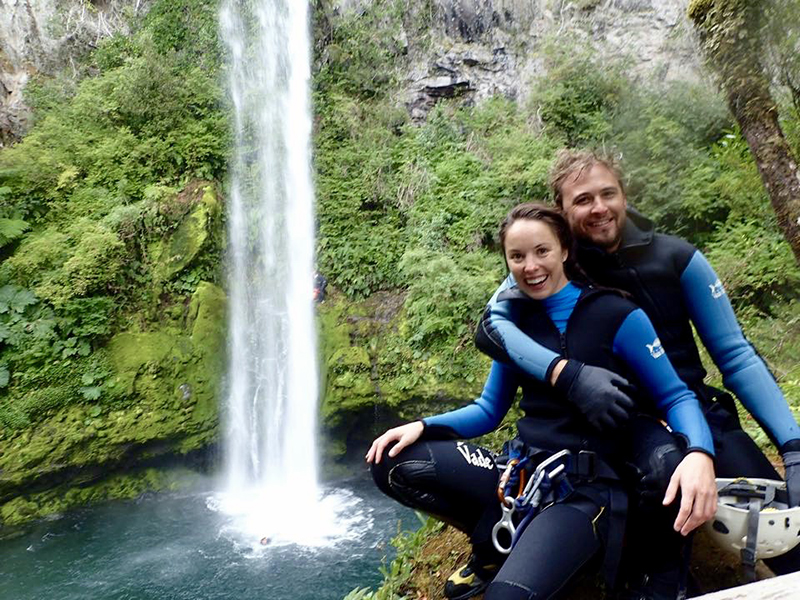
Marita Jansons, a teacher, and Matt Butt, a lawyer, both quit their jobs to travel for a year in 2015 and don’t regret anything.
Name & Age: Marita Jansons (age 29) & Matthew Butt (age 31)
Hometown: Sunny Sydney, Australia
Country Count: Between us we’ve been to 40 countries. In 2015, we hit-up 19!
1. What made you quit your jobs to travel for a year?
Ultimately, our trip was our delayed ‘gap year.’ Matt has always wanted to tick extended travel off his bucket list. I took some convincing. When it got to the point of Matt purchasing non-refundable, one-way tickets to Argentina, I knew he was serious!
We were also planning a wedding and discovered that weddings are EXPENSIVE! We figured we could get three to six months of travel out of the cost of one day. The wedding could wait!
For Matt, it was never a question. He wanted to go — job or no job. I was really nervous about the prospect of traveling for a year. I was in stable employment [as a teacher] and was convinced that I would need to quit to be able to travel. I had strong roots with my employer and enjoyed my job. When experiencing a particularly significant moment of inner turmoil, I realized that I couldn’t see myself as someone in my final stretch in the race of life saying, ‘One of the best choices I made was staying in my stable job and not seeing the world!’ From that moment onwards, it wasn’t a question, and I threw myself into planning alongside Matt. With all of that said, my employer kindly offered me a year’s sabbatical leave. Would I still have gone had they not? Absolutely!
Matt was offered his same job [at a corporate law firm] when he returned to Sydney but chose to explore other opportunities away from corporate law. He is now working as in-house council for a large Australian company and thoroughly enjoying a better work-life balance.
Since returning (and through our journey) many people have said “I wish I could do what you have done,” usually accompanied by a look of gloom and longing.
We met long-term travelers with mortgages, toddlers, and teenagers; people who had just lost their job/started a new job; those who had sold all they owned, and not one of them had any regrets! Yes, some sacrifices are made. For us, with a little prior planning, the experience far outweighed the forgoes. You only live once, why not dive in head first?!
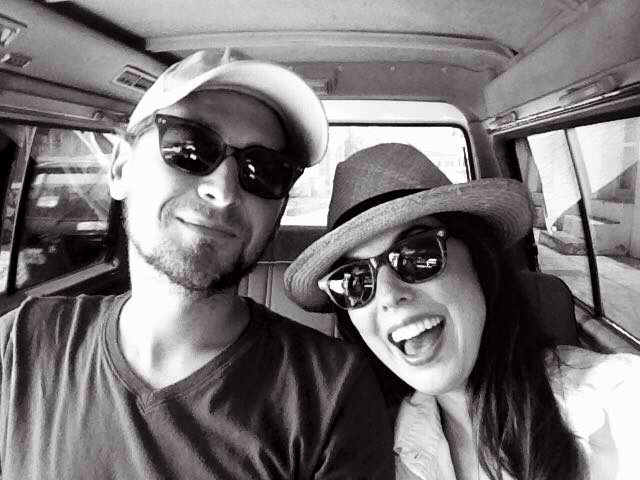
The couple snapped this photo en route to Tikal in Guatemala on Matt’s birthday.
2. Tell us about your year of traveling in 2015.
Our initial grand-plan was to tackle the world. Starting in Latin America, moving onto Europe, before finally finishing in Southeast Asia. In the end, we hit South America and knew we would end up settling in the area for some time. We were hooked by the flavors, sights, scents, sounds and overall passion of the Latino wonderland.
Europe was scrapped. We discovered that slow travel was our groove – the thought of covering the vast amount of land, sea and air we initially planned was not our travel style, at least for this trip. We finished in Southeast Asia exploring Sri Lanka and spending much time underwater diving in Thailand and the Philippines.
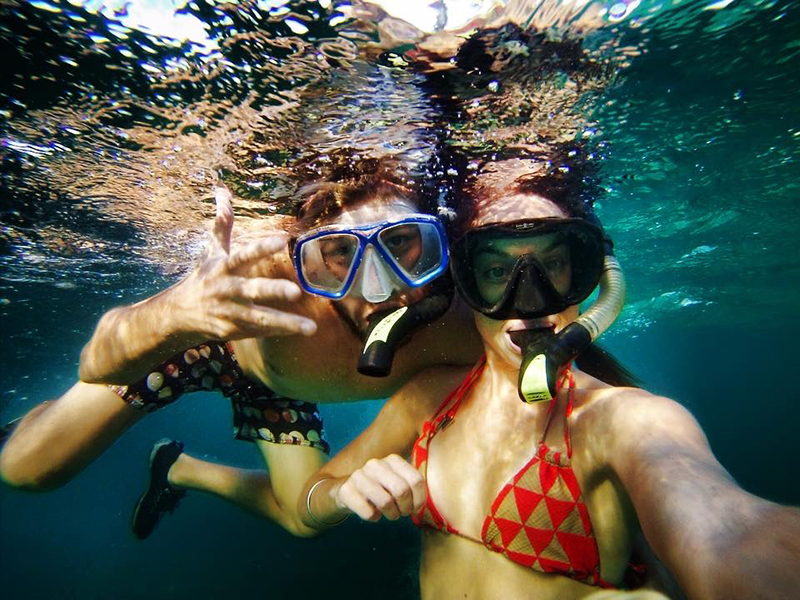
Matt and Marita ended their trip snorkeling and diving in the Philippines before heading home to Sydney, Australia.
3. How far in advance did you start planning/saving for your trip?
We saved for about two years, take-it-or-leave-it. We selected a starting point, booked tickets and mapped out our first two weeks of travel, nothing more. With that said, there were a couple of points where we booked an ‘unmissable experience’ a few weeks in advance as we approached our destination. The reason being, that a few of these trips often book out in advance for example, a sailing trip in the Galapagos or the Inca Trail in Peru (which books out some months ahead). Traveling with a ‘flexible style’ takes some getting used to and planning on the go can be grueling, but for long term travel the pros far outweigh the cons.
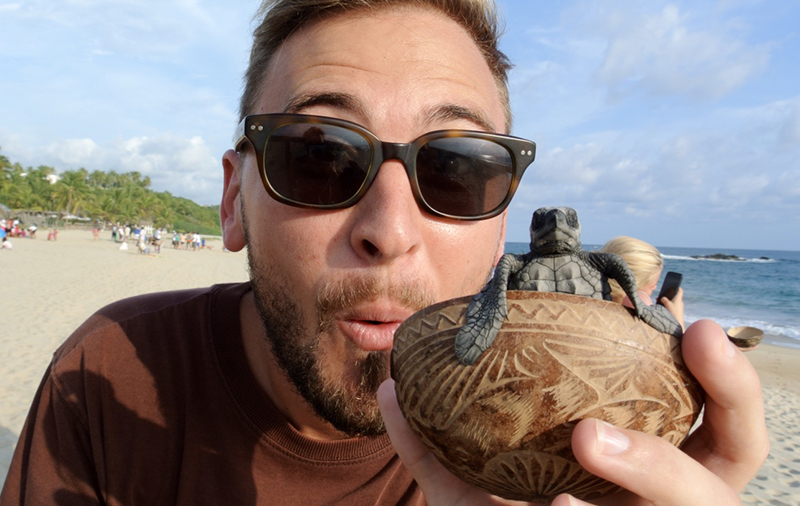
Matt helped release a baby turtle in the ocean in Puerto Escondido, Mexico. He and his fiancé’s budget philosophy was simple – never miss out on something you want to do just to stay on the road longer.
4. What was your daily budget?
Backpacker, flashpacker or cashpacker? We definitely fell into more of a flashpacker category, splitting our time between hostels, hotels and B&Bs. After some time of budget travel, we would give ourselves the opportunity to splash out for a week and enjoy our own space.
When averaged out over the whole trip, our daily spend was about $230 AUS ($174 USD) for the two of us, including all travel and pre-travel expenses (flights, travel gear, insurance, etc.). This was perhaps higher than most travelers we met, due to the fact that we were keen on some more expensive experiences, for example sailing in the Galapagos for 10 days, which was quite pricey. Our main rule was to never miss a desired experience in the aim of simply extending our length of travel – we felt that it would be awful for us to have returned home only wishing we ‘woulda, coulda, shoulda,’ and even if this meant an early return, we were willing to make that sacrifice.
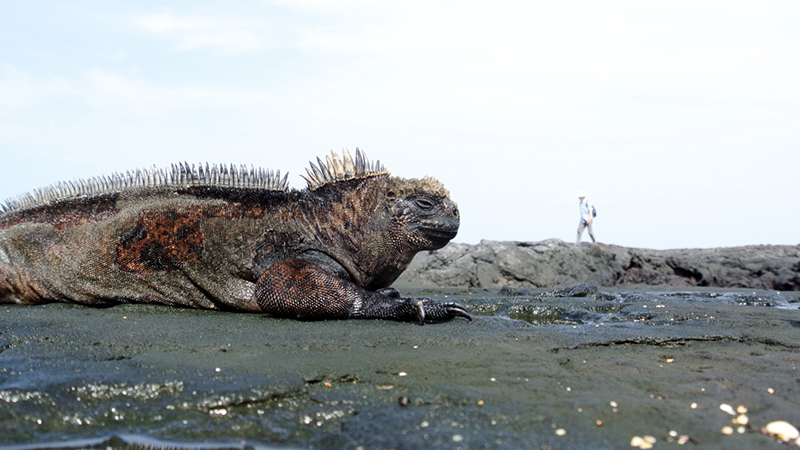
The couple splurged on a 10-day trip to the Galapagos, which was one of the highlights of their trip.
5. Share one of your travel highlights.
Our list of highlights is extensive. We found the more we traveled, the more our bucket list grew. Being difficult to cut highlights down to only one, here is a quick list of some of our top picks:
- Learning a new language was challenging and enriching, and absolutely enhanced our travel experiences
- Getting up close and personal with the friendly fauna of the Galapagos. In fact, just meeting and swimming with loads to exciting animals including whale sharks, manatees, thresher sharks, turtles, penguins, fur seals, sea lions, marine iguanas… the list goes on!
- Hiking in Patagonia in El Caltén, Argentina
- The three-day overland border crossing from Chile to Bolivia – with the one and only ‘Travel Like Anna’!
- The rich culture of Colombia, dancing salsa in Havana, Cuba and absolutely everything about Mexico!
- Getting out of our comfort zone and facing fears. We learnt to scuba dive, went canyoning and even tried something called hydro-speed (look it up)!
6. What was your greatest struggle during the trip and how did you overcome it?
Giving ourselves permission to stop. Travel can become tiring and around the six month mark we experienced a little ‘planning burnout’ (i.e. drifting without plans, and not making the most of where we were). We gave ourselves time to stop for a week here-or-there; but, in hindsight, stopping for a few weeks with prior planning and purpose could have been more useful. Though, our need to rest did lead us to some extraordinary locations including a hut in the Panamanian Jungle. Throughout the year, we discovered we were never in one place of accommodation for longer than one week!
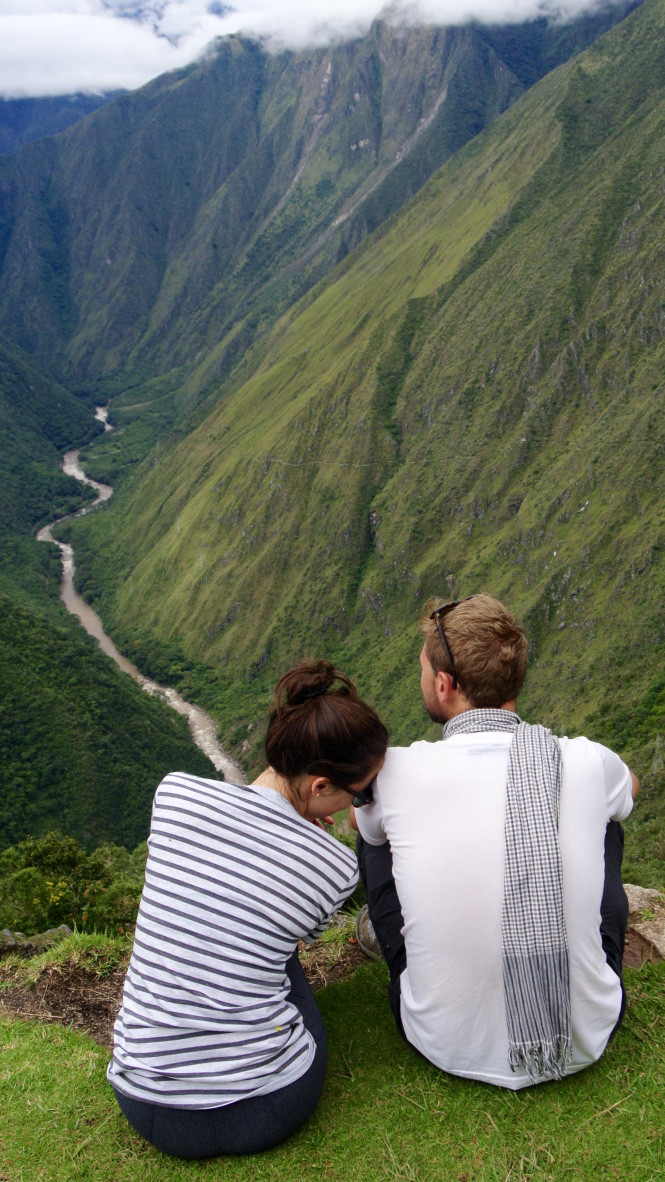
Marita and Matt stop to rest while hiking the Inca Trail to Machu Picchu in Peru.
7. What advice would you have for couples aspiring to travel together?
Patience, compromise and understanding is an absolute must. We hit our 10-year anniversary in 2015 and even after all those years we still found being together 24/7 challenging at times. With that said, travelling together has made us a stronger couple. Our respect for each other has grown – respect for our strengths and our weaknesses. We shared the dizzying highs and supported each other through the lows. You learn how to balance each other; when one of us needed to take a backseat, the other took charge for the day. Our year changed us as individuals and allowed us to grow as a couple with such a strong desire to continue sharing new experiences together.
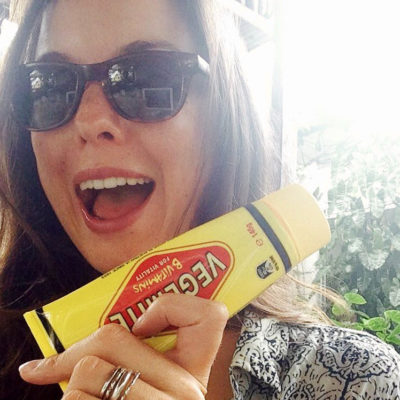
Marita’s packing tip: Don’t forget to pack your Vegemite! (Or any other food from home the you love!)
8. Name three things to pack for a long-term trip
This is a hard question! There are the obvious answers such as a decent backpack, inner sheets, good waterproof shoes, a small wind/waterproof shell, multi-purpose layers etc. However, these tend to be mentioned regularly on travel blogs. So we’ve tried to narrow it down to items we found EXTREMELY useful but which are not always first thought of:
- Packing cubes!!! These babies are a genius way of organizing and maximizing space in your bag. These packing cubes found on Amazon are similar to the ones we used. I used three slim and one small cube while Matt preferred larger cubes.
- Extra/back-up banking cards. We had a few occasions/countries where the ATM cards from our international bank wouldn’t work – thanks Peru! We were lucky to have back-up cards from our Australian banks to save the day (go figure), even if we did encounter delays as a result.
- Vegemite! (Or any nostalgic food item not available outside of your home country). Being Australian, we grew up on Vegemite. Thinking it a little excessive, we actually didn’t pack any at the start of the trip. BIG MISTAKE! I got to the point of considering having it shipped to a location in Chile. We ended up meeting some lovely Australians heading home, who donated their stock of Veg. Not only was this a nice reminder of home, it was also a great conversation starter!
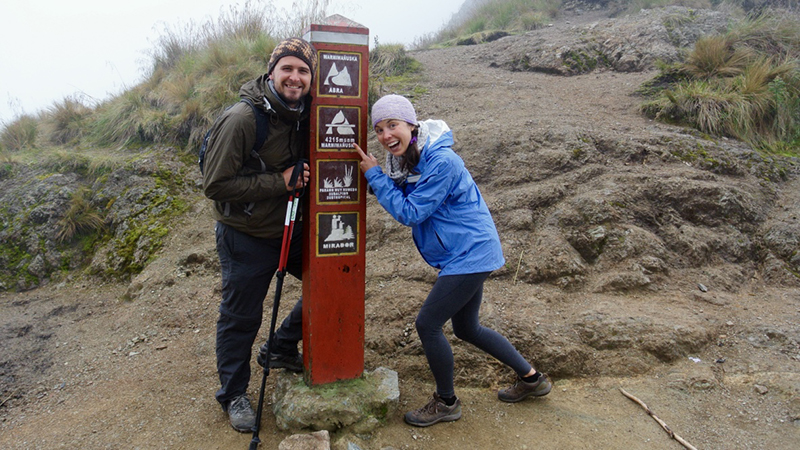
Matt and Marita packed a versatile amount of jackets and layers for all their hiking plans and used packing cubes to make sure everything fit in their backpacks. (Dead Women’s Pass, Inca Trail, Peru)
9. Marita, you are the quite the chef. Can you share some tips for cooking while traveling?
Keep it simple. You don’t have the luxury of stocking a fridge or having complicated cooking equipment on hand, so start with a few key ingredients and build from there. Some things that helped us along the way:
- A small air-tight container is a great way to store a few key ingredients to jazz up a meal. Generally, we carried some garlic (an easy way to add depth to your curry or pasta sauce), stock cubes (adds quick flavor to numerous dishes and stores easily), a small jar of cinnamon, dried chili flakes, red curry paste (when we could get our hands on some), honey and peanut butter.
- Become familiar with items stocked in hostel kitchens. Some kitchens are fantastic with herbs and spices; others, you’ll be lucky if someone has left a can of pickled eels from 1978. Usually, you’ll be able to get your hands on communal cooking oil, salt and pepper. There will also often be some rice and pasta on hand.
- Hit up the local farmers’ markets – not only are they an amazing cultural experience you can also get your hands on beautiful fresh produce.
- Eating with new acquaintances is a great way to share cost and make new friends!
Two of our favorite recipes we used are outlined below:

These three-ingredient banana pancakes were AMAZING. This is a picturesque batch Marita made when we were in Bolivia!
Easy-Peasy Gluten-Free Banana Pancakes (Serves 2)
| Hostel Kitchen | From our Container | From the Market |
| 1 tbsp. Cooking Oil | Cinnamon Honey to serve |
2 medium ripe bananas 4 large eggs |
Mash the bananas. Mix in the eggs and cinnamon. Cook these lovelies on a low heat for a little longer than you would flour-based pancakes. There is a great overview of the recipe here. I made my pancakes a little larger than recommended in the link, cooking them slower on a lower heat, this way issues with flipping were reduced.
Pumpkin and Chickpea Curry (Serves 2)
| Hostel Kitchen | From our Container | From the Market |
| 1 tbsp. Cooking Oil Steamed rice to serve |
2 cloves of garlic, finely sliced 2 tbsp. red curry paste 1 cup (250ml) vegetable or chicken stock |
400g can of chickpeas 400ml coconut milk 600g pumpkin, pealed and chopped* 1 eggplant (aubergine), pealed and chopped* lime wedges to serve (if available) |
*Dish can be made with other similar vegetables (carrots, potato etc.) depending on availability.
Heat oil in saucepan over a medium-high heat. Add garlic and curry paste and cook until fragrant. Add chickpeas, pumpkin, eggplant, coconut milk and stock to pot. Simmer until pumpkin is soft. Serve with steamed rice and lime wedge.
10. What is your next adventure?
We really enjoyed our time in the Philippines and are thinking of returning and traveling through some areas we didn’t have the chance to explore. We’re also finally planning our wedding!. [They are getting married in January with a honeymoon in Fiji to do some diving!]
__________________________________________
COMING UP:
Holiday Gift Guide: 10 Great Travel Gifts
Like it or not, the holidays are creeping up on us! To help you prepare for the season and your future travels, I will share 10 great gift ideas for friends and for you to pass on to Santa for your Christmas list!
